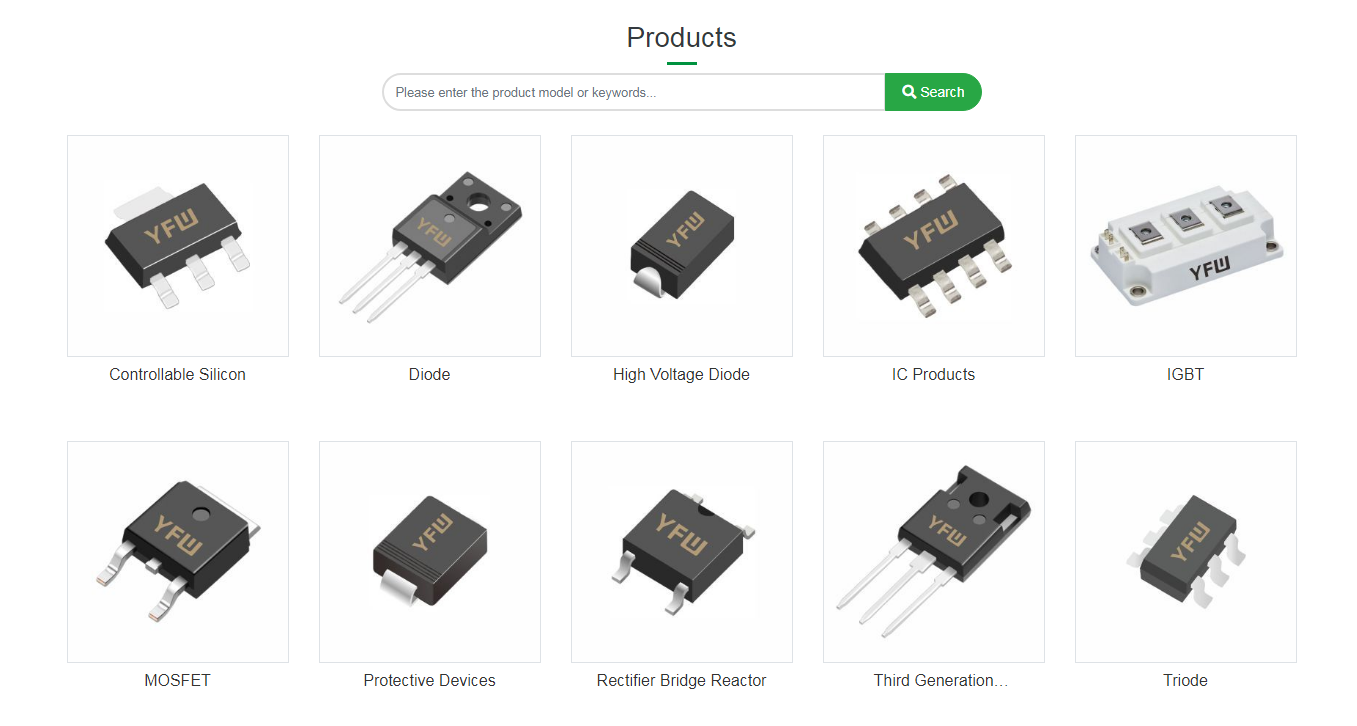Date:2025-03-18 Categories:Industry News Hits:920 From:Guangdong Youfeng Microelectronics Co., Ltd(YFW)
A clamping diode, also known as a limiting diode, is a special type of diode that prevents the voltage in a circuit from exceeding a certain, thus protecting the circuit from high voltage damage. Clamping diodes are widely used in various electronic devices to prevent damage caused by voltage spikes and are widely used in circuit protection and processing. Here is a detailed introduction to the clamping diode: 1. Structure: The structure of a clamping diode is similar to that of an ordinaryode, mainly consisting of P-type semiconductor material and N-type semiconductor material, forming a PN junction. Conductive electrodes, namely anode (A) and cathode (), are connected to both sides of the PN junction. The difference lies in the optimization of the design and material selection of the clamping diode for its special application purpose to its performance in limiting voltage. 2. Advantages: 1. Voltage protection: The clamping diode can effectively limit the voltage in the circuit, protecting components from high voltage impact. 2. Quick response: Due to its simple structure, the clamping diode can quickly respond to voltage changes, providing immediate protection. 3 High reliability: The clamping diode has strong voltage resistance and stable performance, enhancing the reliability of the circuit. 4. Easy integration: Small in size, it is easy integrate with other circuits or components without causing burden on the circuit design. 3. Principle: The working principle of the clamping diode is based on the characteristics the PN junction. In normal operation, when the voltage in the circuit is lower than the design limit of the clamping diode, the clamping diode is in reverse cutoff and hardly affects the circuit. When the voltage in the circuit exceeds this limit, the clamping diode quickly conducts, forming a low resistance state, and the excess voltage is discharged the clamping diode, thus protecting the circuit elements from damage. The clamping diode can be designed as forward or reverse clamping according to needs. Forward cl is used to limit positive voltage, while reverse clamping is used to limit negative voltage. In addition, the clamping diode can also form a complex voltage clamping network by with other electronic components to meet specific voltage control needs. 4. Applications: Clamping diodes are widely used in various electronic devices, mainly for power supply stabilization andvoltage protection. For example, in a computer power supply, a clamping diode can prevent a sudden increase in voltage that could damage computer hardware. In communication equipment, cl diodes can prevent overvoltage from interfering with signal transmission. In addition, clamping diodes are also widely used in medical devices, automotive electronics, industrial control, and other fields 5. Installation: When installing a clamping diode, the following points should be noted: 1. Installation location: First, determine the installation location of theode, ensure correct connection with other components, and avoid causing short circuits or other faults. 2. Polarity: Clamping diodes have positive and negative poles, usually distinguished markings or shape. When installing, ensure the correct connection of the positive and negative poles, otherwise, it will affect normal operation. 3. Installation method: Choose the appropriate installation according to the specific situation, which can be surface-mounted (SMD) or plug-in installation, paying attention to welding technology and process requirements. 4. Heat dissipation Clamping diodes in operation.

Previous:What is a fast recovery diode and its basic analysis, and development history?
Next:NZT560A 1A 80V SOT-223 Marked NZT560A Small Signal Transistor Y Micro Brand